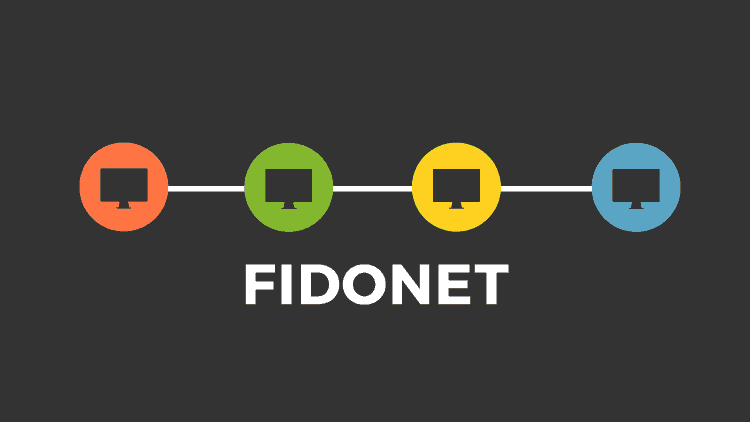Internet compuserve fidonet ; the Prehistory of the Internet
Do you think that the Internet has always been there? I can tell you guys are very young.
Although if you are a little older, you may remember that time when you didn’t have a mobile phone in your pocket that kept telling you to take advantage of the latest offers or to upload your photos.
This post is written for everyone, for those who knew those exciting years as well as for cyborgs who were born with a USB port in the back of their head. For all of them, let us remember a little better how the Internet was in those years, through two places located in the Prehistory of the network: internet compuserve fidonet .
Legend has it…
If you are “in your mid-age years”, you will probably remember the feelings that we as computer users felt at that time. Every new development, every new discovery, made our skin bristle. For those of us who thought the ZX Spectrum was the Eighth Wonder of the World and an open door to unimaginable worlds, the possibility of connecting computers to each other seemed like a pure miracle, something almost inexplicable. For those of you who haven’t experienced it, let’s put history in context.
Back in the late 1980s, the Internet was something like a deep, unknown heart of the African jungle. Only a few experts dared to go inside (in fact, most of them had never even heard of it) and they did so with great emotion.
At that time, in fact, Internet access was limited to some universities and companies, opening up to home users during the 1990s. Back then, the connection between computers had very little to do with what we know today. First of all, a phenomenon that you users of that time will remember fondly was the need to interrupt telephone connections – from the house, if we were connected from our own homes – which led to a series of complaints from our mothers and fathers (” Boy, please leave the phone free, I have to call your Auntie Sophia!”).
But our story begins just before the slightly more mainstream access that the previous scene shows.
At the end of the 1980s, as we were saying, the restrictions were even greater. A large part of the very few connections were made through the so-called BBS (Bulletin Board System), a very limited type of telephone communication software that allowed to share text over a network.
As the popularity of BBSs gained ground, platforms were formed, such as those created by providers, that charged users for connection time (as you can imagine, substantially higher per minute rates than today). In this case, one of the world’s best known suppliers was Compuserve.
Founded in 1969, Compuserve became the most successful provider during the 1980s (mainly for universities and companies) and the early 1990s. But what exactly did it offer?
What were you able to do in Compuserve?
For current Internet users, when it comes to internet compuserve fidonet ,the options offered by Compuserve may seem very limited, something like advanced teletext (teletext was also impressive at the time, by the way). But, in their time, they were a window to a new world.
Compuserve had options that are now ordinary and even obsolete, but at the time very new, such as e-mail, newsgroups, or bulletin boards or comments (precursors of current forums). Again, remember the context: at a time when the most widely used means of communication were telephone and postal mail, the possibility of communicating in writing with strangers anywhere on the planet was an exciting development.
Although you might be disappointed by the following: at that time, there were hardly any images on the networks, and very few on the existing ones had anything to do with the current ones (uploading a standard photo from a current smartphone to the network would have taken about a whole day, due to the low data transmission speeds at that time). The text ruled, the time for the image would come later.
However, there were some other playful options available. You could download game demos, and even entire games. Of course, they have nothing to do with the current ones.
And FidoNet?
Like Compuserve, when it comes to internet compuserve fidonet, FidoNet was one of the most popular networks in the 1990s, shortly before the arrival of the Internet.
Founded in 1984, it also had a semi-private messaging system (similar to e-mail) and the possibility of transmitting files. It also had newsgroups and chats.
One of its features, which made it so different from the current Internet, is its total lack of commercial content. Free of advertising or spam, FidoNet was set up as an open, non-profit network (although it was obviously necessary to pay the undesirable telephone fees).
If there is one word that could define that time and the years that followed, it is “thrill”. Anyone who has experienced it can confirm it. Those groundbreaking innovations astonished an entire generation, creating the world in which we live today. If you lived through those beginnings, it would be very interesting to learn about your experiences and would you like to share them with the readers of this blog? We would be delighted if you could leave a message in the comment section at the end of this article. Let us know your opinion on the internet compuserve fidonet.
Although, before you do so, we would like you to meet Pandora FMS. If the Internet has changed a lot, Pandora FMS has also changed.
Pandora FMS was born in 2003 and has gone through many stages until becoming, nowadays, one of the most powerful monitoring software on the market.
Because Pandora FMS can monitor devices, infrastructures, applications, services and business processes.
Do you want to know more about what Pandora FMS can do for you? Click here: https://pandorafms.com
Or you can also send us any query you may have about Pandora FMS. You can do this in a very simple way, thanks to the contact form at the following address: https://pandorafms.com/company/contact/
The team behind Pandora FMS will be happy to help you!
Pandora FMS’s editorial team is made up of a group of writers and IT professionals with one thing in common: their passion for computer system monitoring. Pandora FMS’s editorial team is made up of a group of writers and IT professionals with one thing in common: their passion for computer system monitoring.
















